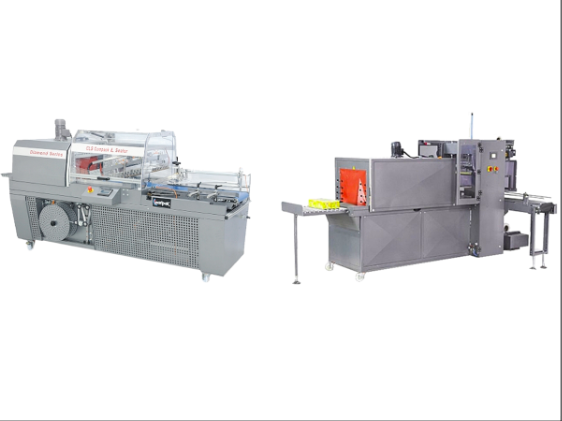In today’s fast-paced manufacturing and distribution environments, efficiency and speed are critical to staying competitive. Automated packaging lines have become the backbone of modern production, enabling businesses to meet growing demands without sacrificing quality. One of the most essential components in these systems is the belt conveyor—a simple yet powerful tool that plays a vital role in streamlining operations.
From moving products seamlessly between machines to minimizing manual labor, belt conveyors are foundational to automation. This blog explores how belt conveyors contribute to improved workflow in packaging lines, the types available, and why they are a smart investment for businesses looking to optimize performance.
The Role of Belt Conveyors in Packaging Automation
Seamless Product Movement
At the core of any automated packaging line is the ability to transport items quickly and reliably from one station to the next. Belt conveyors enable this continuous flow. Whether it’s moving raw materials to filling stations or transporting packed goods to sealing machines like an automatic shrink packing machine, the uninterrupted motion reduces bottlenecks and downtime.
Consistency and Accuracy
Manual handling often introduces variability and error. Belt conveyors, on the other hand, provide uniform movement, ensuring that every item follows the same path at the same speed. This consistency is particularly important for operations that involve timed or synchronized steps, such as labeling, weighing, or heat sealing with an auto shrink wrap machine.
Integration with Other Machines
One of the key advantages of belt conveyors is how easily they integrate with other automated components. Whether you are using robotic arms, sensors, or automatic sealing machines, the conveyor serves as the link that brings all the elements together. This integration allows for a fully automated, synchronized line that minimizes human intervention and increases output.
Types of Belt Conveyors Used in Packaging
Flat Belt Conveyors
These are the most common and versatile conveyors used in packaging. They are ideal for transporting small to medium-sized items and can be customized in length, width, and speed. Flat belt conveyors are often found in food packaging, pharmaceutical production, and consumer goods manufacturing.
Incline and Decline Conveyors
For facilities with vertical space constraints or multilevel operations, incline and decline conveyors are invaluable. They move products between elevations without stopping the flow, maintaining the efficiency of the packaging line.
Modular Belt Conveyors
Made of interlocking plastic segments, modular belts are great for applications requiring curves, high resistance to cutting, or wash-down environments. They are commonly used in industries like meat processing and beverage bottling.
Cleated Belt Conveyors
These conveyors have raised dividers (cleats) to hold items in place during incline movement. They’re ideal for applications where items might slide or shift, ensuring reliable transport through different stages of the packaging process.
Key Benefits of Belt Conveyors in Packaging Lines
Increased Throughput
By automating the movement of goods between stations, belt conveyors significantly boost throughput. With less need for manual intervention, production lines can run faster and for longer periods with fewer interruptions.
Reduced Labor Costs
Automating product transport with belt conveyors decreases reliance on human labor for repetitive, time-consuming tasks. This not only reduces labor costs but also minimizes the risk of workplace injuries associated with lifting or moving heavy items.
Enhanced Safety
Modern belt conveyors are designed with safety features such as emergency stop buttons, side guards, and speed controls. These measures protect workers and help companies maintain compliance with workplace safety regulations.
Lower Maintenance Requirements
Compared to other types of mechanical handling equipment, belt conveyors are relatively low maintenance. With proper design and occasional servicing, they can operate reliably for years, making them a cost-effective component of any packaging line.
How to Choose the Right Belt Conveyor for Your Needs
Consider the Product
The size, weight, and shape of your products will influence the type of conveyor best suited to your operation. Delicate items may require smooth belts, while bulk goods might need cleated or modular designs.
Think About Speed and Throughput
Determine the speed at which your line needs to run to meet demand. Some packaging environments require high-speed conveyors synchronized with machines like an automatic side sealing machine, which demands precise control and timing.
Evaluate the Space
Measure your available floor space and ceiling height to decide whether you need straight, incline, or curved conveyors. Modular systems can help you maximize space in complex layouts.
Integration Capabilities
Ensure your chosen belt conveyor can integrate easily with existing or future machinery. Look for systems with compatible control panels, sensors, and automation protocols.
Conclusion
When evaluating how to improve workflow in an automated packaging line, the importance of belt conveyors cannot be overstated. These systems act as the arteries of the operation, transporting products reliably and efficiently between stages. From basic transport to integration with advanced machines like automatic shrink wrapping machines and sealing units, belt conveyors offer flexibility, speed, and reliability.
Whether you’re upgrading an existing setup or building a new packaging line from scratch, investing in the right belt conveyor system is a crucial step toward maximizing efficiency, reducing costs, and staying ahead in a competitive market.

